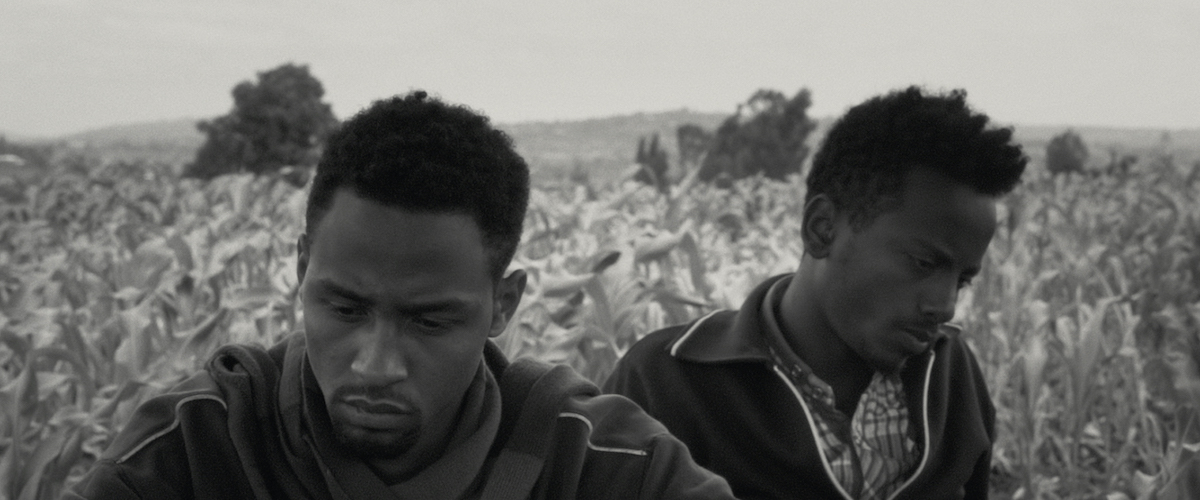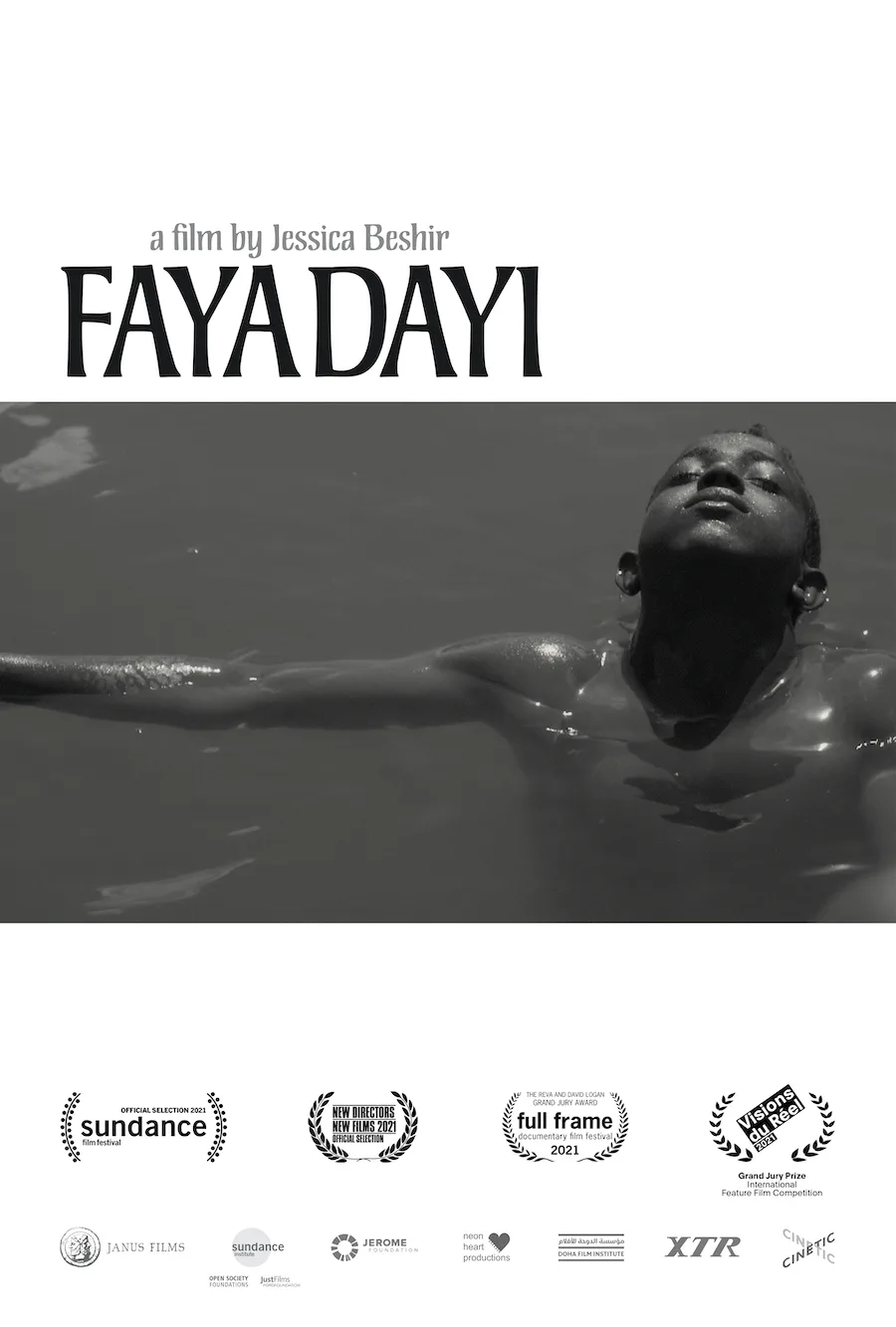“I heard that when people are high, they start watching films in their minds. Once you go in, you won’t find a way out.” — Mohammed, 14 years old
“Faya Dayi,” Jessica Beshir’s striking feature-length debut, is constructed in such a way that it seems you are watching it “in your mind,” an inner space where the images have powerful and symbolic resonance, as happens in dreams. The film weaves a spell with its rhythms, sometimes slow, sometimes fast, all accompanied by a vivid and haunting sound design. The overall effect is hallucinatory, akin to the “high” given by “khat,” the one cash crop in the Harar region of eastern Ethiopia. The community there once grew coffee and other lucrative crops for export, but those days are gone. Harar’s economy is now dominated by khat and its seasonal rituals: harvesting, preparing, bundling, transporting, selling it—to other regions, as well as to locals who smoke and chew the leaves, lulled into a listless altered state by khat’s psychoactive qualities. Filmed in luminous black and white, each image more beautiful than the last, “Faya Dayi” is not your typical documentary.
Beshir grew up in the walled city of Harar, but political tyranny forced her family to flee when she was a teenager. Similar upheaval has hijacked generations, and Beshir, during her visits back, noticed the rise of khat into all-encompassing prominence. Although khat is indigenous to the region, centralized in myths and fables, it is now the only game in town, the only way to make money for the people who are an oppressed minority (Oromo) as it is. Many of the older people are addicted to the “chew,” and lie in dark rooms, waiting for the delivery boys to arrive with the small bundles. People’s personalities change under the influence, as Mohammed, whose quote opens this review, knows only too well. His father does nothing except chew khat, waiting for “merkhana,” the plant’s euphoric high. Things are volatile for Mohammed. “I never know which person to expect,” he says of his dad. Older men warn the teenage boys in their midst: “Don’t start a chewing habit.” One man says wearily: “Everyone chews to get away.” The single-crop economy has entrapped everyone.
Mohammed’s is just one of the individual stories in “Faya Dayi.” The stories are not told so much as they emerge from the visuals, the voices rising up through the fields, the river, the skies, the voices soft and intimate, like a whisper in your ear. For the most part, the voices are disconnected from faces. These disembodied voices work in an interesting way. It’s not exactly the same as a Terrence-Malick-style voiceover, but there are similarities. The stories told are often painful and specific—tales of parents, children, first loves, political strife, yearnings for a better life—but the voices whisper their truths like a collective prayer. The eloquence is often startling: “Fertile land. Country of honey dew,” says a man, squatting over a pile of khat leaves, his hands busily plucking the sharply pointed leaves off the stalk. “Yet every regime has kept us from working our own fertile land.”
The political aspect of this world, the longstanding struggle of the Oromo people with the Ethiopian regimes (multiple), doesn’t make its explicit appearance until an hour in, when a group of young men sit in a field, dry leaves crackling around them in the wind, talking about their experiences being imprisoned, beaten, tortured. One says, “Our struggle is not new.” This gives heft and weight to what we have seen, a world where time seems to have either slowed down (Beshir’s intermittent use of slo-mo is extremely effective, adding to the trance-like quality) or stopped entirely. Beshir gets this across with deft collage. After a lingering shot of two completely veiled women walking on a dirt road, their robes billowing around them in the wind, evocative of the timelessness of this world and this place, Beshir cuts quickly to a shot of stone buildings whizzing by in a blur. After this jolting change-up from stasis to movement, a male voice says, “I remember in 2015 young people joined the peaceful protests.” Even without the explanatory language, Beshir’s careful juxtaposition of images tells the story.
But it’s how these two things—voices and images—work together that makes “Faya Dayi” what it is. There is another documentary that could have been made about khat, a straightforward one, where people talk to the camera, and experts weigh in on the agrarian history of the region as well as the political conflict. That other documentary would have been informative, but it wouldn’t be “Faya Dayi,” which works kinesthetically. You can hear images. You can feel sound.
The painterly black-and-white gives “Faya Dayi” the feeling of a memory, mournful and yet beautiful. Beshir thinks like a portrait painter, or a still-life artist: there are close-ups of hands, rusted kettles, filmy curtains swaying in the wind, casting shadows on the floor, birds in flight, children submerged in muddy river water, faces to the sky. Smoke billows in the air, the smoke of the fires underneath the khat, and Beshir holds the camera on the smoke, watching as the whorls and eddies take on a life of their own. “Faya Dayi” has a slow accumulation of sensory information: night sounds, bird calls, the cacophony of the men at the khat market, the quiet murmurings of the women in their separate world, the call-and-response songs as the khat is harvested. The night scenes are beautiful, the seemingly impenetrable darkness pierced by a swaying lantern, a misty moon, a flickering fire on the rocks.
Much of this, including the voiceover, works as a distancing technique, the dreamy voices laid over all striking beauty. Some viewers may find the lack of exposition frustrating and may find the pace too slow. But “Faya Dayi” has more in common with a tone-poem like RaMell Ross’ “Hale County This Morning, This Evening” than a “documentary.” An interesting thing happens with Beshir’s approach. The mostly disembodied voices draw you in further, deeper, than they might have with an ordinary “talking head” interview. Instead of “hearing” the stories, you “feel” them. Beshir doesn’t just show the audience what she sees. She’s up to something more profound. She helps you to see, not the surface of things, but their essences: it’s there in all those hands and birds and curtains and smoke. It’s there in the teenage boys standing up in the back of a moving truck, their T-shirts whipping like flags. It’s there in the bundles of khat, piled up ready for transport. It’s there in the blinding headlights of oncoming trucks, hurtling through the pitch-black night, on their way to somewhere else, somewhere far far away.
Now playing in select theaters.




















